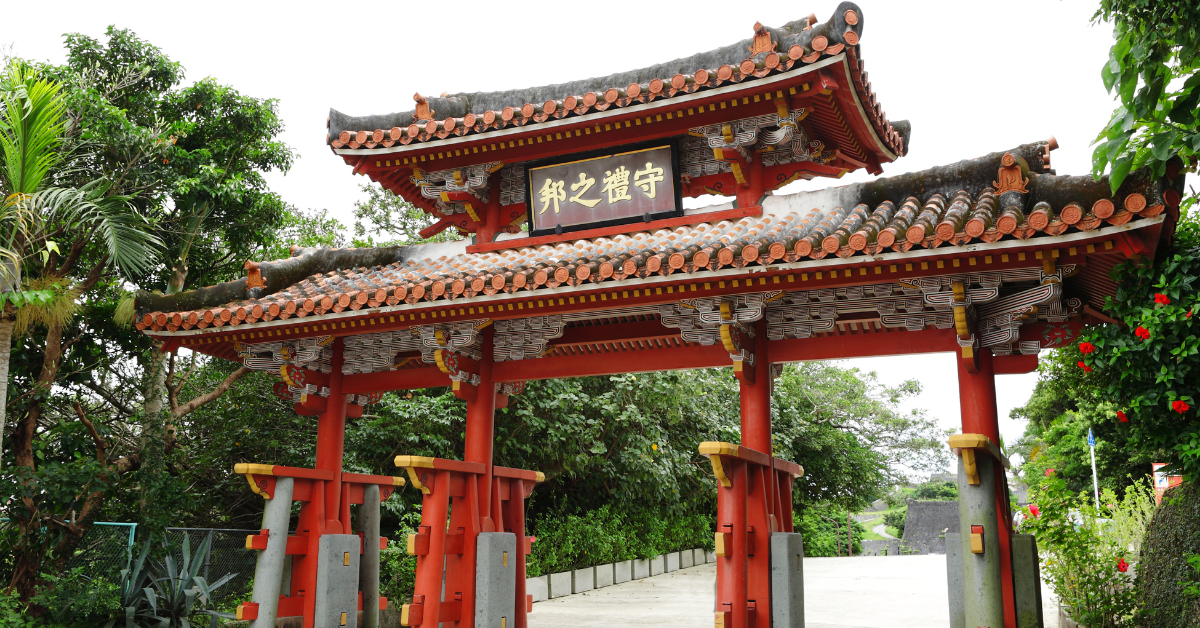The Gusuku Sites and Related Properties of the Kingdom of Ryukyu are more than historic structures; they represent a unique blend of spirituality, nature, and cultural identity. For Japanese visitors, exploring these sites is not just sightseeing—it is an emotional and reflective experience rooted in respect and historical pride.
What Are the Gusuku Sites and Related Properties of the Kingdom of Ryukyu?
A Symbol of Cultural and Historical Fusion
The Gusuku Sites and Related Properties of the Kingdom of Ryukyu were inscribed as a UNESCO World Cultural Heritage site in 2000. Built by the independent Ryukyu Kingdom that thrived from the 12th to the 17th century, these sites are of great historical significance to the Japanese people. “Gusuku” means “castle” in Okinawan dialect, and unlike mainland Japanese castles, gusuku are characterized by curved stone walls and designs that harmonize with natural landforms. Their design reflects the Japanese aesthetic of coexistence with nature. These structures functioned not only as military fortresses but also as political, religious, and cultural centers. Increasingly, younger generations in Japan are also engaging with these sites through drone photography and VR experiences.
| Category | Details |
|---|---|
| Year Registered | 2000 |
| Region | Across Okinawa Prefecture (from south to north) |
| Cultural Traits | Fusion of Chinese, Japanese, and Southeast Asian cultures |
| Main Elements | Castle structures, royal tombs, gardens, and sacred sites |
| Historical Period | 12th to 17th century (First and Second Sho dynasties) |
Each of these elements contributes to the perception of Okinawa as a culturally distinct part of Japan among Japanese visitors.
The 9 Components of the World Heritage and Their Features
Purpose and Aesthetic Behind Each Site
These nine heritage sites reflect the heart of the Ryukyu Kingdom’s politics, religion, and daily life. To Japanese people, they are places for connecting with history and finding inner reflection.
| Japanese Name | English Name | Key Features |
|---|---|---|
| Shurijo Castle Site | Shurijo Castle Site | Political center. Iconic vermillion architecture. |
| Nakagusuku Castle Site | Nakagusuku Castle Site | Elevated and strategic fortress. Famous for its stone walls. |
| Zakimi Castle Site | Zakimi Castle Site | Early construction shows high-level masonry skills. |
| Katsuren Castle Site | Katsuren Castle Site | High vantage point. Once a key trading base. |
| Nakijin Castle Site | Nakijin Castle Site | Northern stronghold. Also known for cherry blossoms. |
| Tamaudun | Tamaudun | Royal mausoleum. Grand and solemn stone construction. |
| Sonohyan-utaki Ishimon | Sonohyan-utaki Ishimon | Sacred gate marking entrance to holy area. |
| Shikinaen | Shikinaen | Royal garden blending Chinese and Japanese styles. |
| Sefa-utaki | Sefa-utaki | Central spiritual site in Okinawan faith. Still actively used. |
These are not mere ruins but living cultural and religious spaces that continue to attract Japanese respect and reverence.
Japanese Impressions and Cultural Perspectives
Admiration for Architecture, Nature, and Spirituality
Japanese visitors often express admiration for the unique design and integration with nature of these sites. The curves of the stone walls, the open-air designs, and the harmony with the surroundings create a lasting impression. Sacred elements also bring spiritual satisfaction. Below is a table categorizing typical reactions from Japanese tourists:
| Type of Reaction | Common Themes |
|---|---|
| Architectural Appreciation | Curved masonry, vibrant colors, harmony with nature |
| Spiritual Respect | Feeling the sanctity of places like Sefa-utaki |
| Historical Understanding | Curiosity about diplomacy and daily life in Ryukyu Kingdom |
| Family Engagement | Shared experiences across generations |
| Emotional Healing | Peaceful spaces offering a sense of escape from daily life |
Many Japanese value these visits not as sightseeing but as a multi-sensory cultural experience that deepens over time.
The Value of These Sites as Domestic Travel Destinations
Why Japanese Travelers Love These Sites
Gusuku sites serve as both educational and recreational destinations. They are common stops for school trips and family vacations. Below is a summary of the tourism features specific to domestic Japanese travel:
| Feature | Details |
|---|---|
| Learning Opportunities | Schools use sites to teach history and culture experientially |
| Accessibility | Convenient from major Okinawan cities by public transport |
| All-Season Appeal | Many sites are suitable for visiting year-round |
| Social Media Friendly | Visually striking structures and landscapes attract youth |
| Local Interaction | Talking with guides enhances understanding of local culture |
These elements help make gusuku sites must-visit locations that leave lasting impressions on Japanese travelers.
Tips for International Visitors
Respecting Local Beliefs and Customs
Many gusuku remain sacred to local communities. Even though they are tourist spots, visitors should be aware of their spiritual significance. The following table outlines basic etiquette when visiting:
| Item | Expected Behavior |
|---|---|
| Maintain Silence | Speak quietly and walk softly |
| Dress Modestly | Avoid revealing clothing; remove hats when entering sacred areas |
| Photo Restrictions | Check for and respect no-photography signs |
| Read Signage | Follow posted rules and cultural information |
| Show Respect | Small gestures like bowing reflect cultural appreciation |
Following these guidelines helps visitors be seen as respectful guests and enhances their overall cultural experience.
Conclusion
The Gusuku Sites and Related Properties of the Kingdom of Ryukyu are more than tourist attractions to Japanese people. They are a source of pride, identity, and reflection. These sites are living reminders of a time when Okinawa was a diplomatic and cultural hub in East Asia. For international visitors, experiencing these places offers a meaningful way to understand Japanese values, history, and spirituality. By walking quietly, observing mindfully, and honoring the space, visitors can connect not only with the physical structures but also with the heart of Okinawan culture that still lives on in the stones, trees, and winds.






